Reach for more
Photographer Michael Clark takes us through using the new FUJIFILM GFX 100 medium format camera along with his Elinchrom ELB units to create unique outdoor images.
Clark mixes this powerful new camera with Elinchrom lights to take his images to the next level.
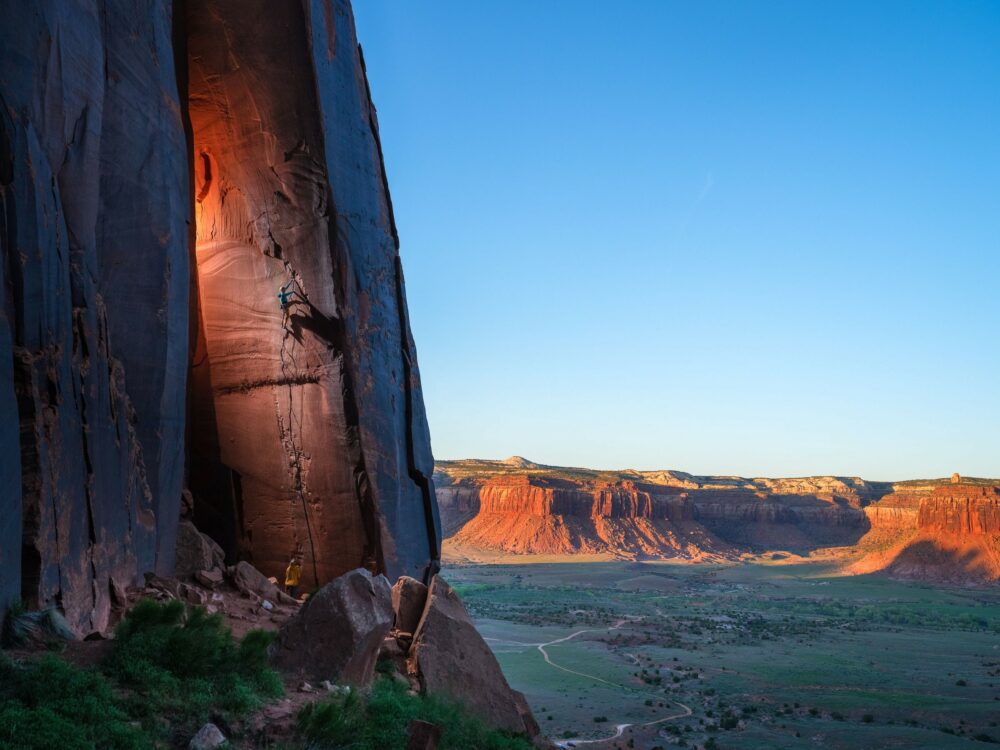
Climber: Savannah Cummins
f/5 at 1/1,600s, ISO 1250, GFX 100, ELB 1200 + HS head at full power + High Performance Reflector.
Over the last few years, with the rise of mirrorless cameras, I have been trying out all the different mirrorless options. Last fall they announced the development of the GFX 100 and my interest was piqued.
I have been dreaming for many years of having a medium format camera that was as fast as my DSLRs and also had the ultimate image quality—and would work with my Elinchrom strobes as well.
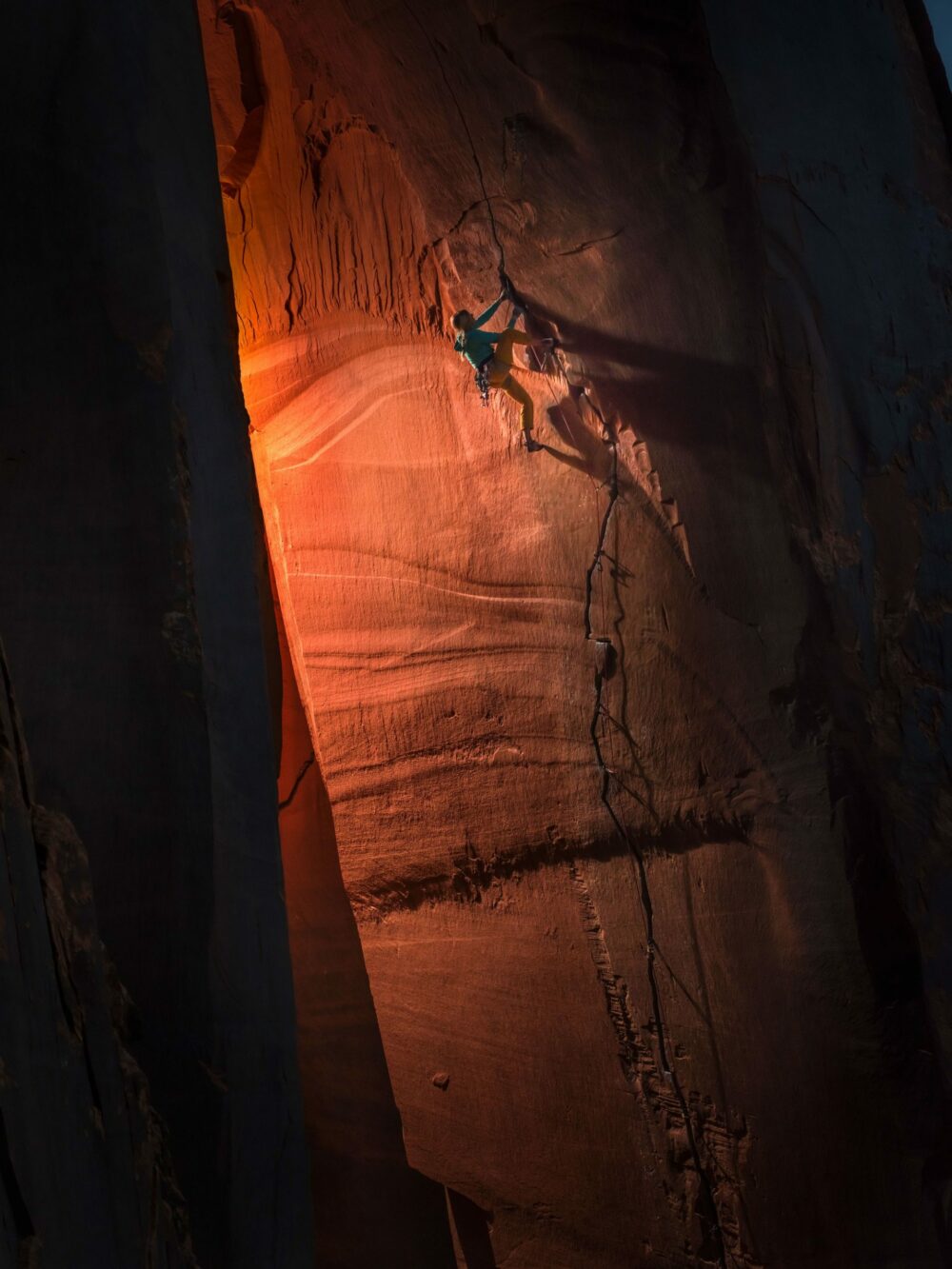
I love to add advanced lighting techniques to any and every assignment I work on.
I chose to go old-school.
In my twenty-three years as an adventure sports photographer I have photographed just about every outdoor sport. For this assignment with Fujifilm, I chose to go old-school and set up both a rock climbing and a downhill freeride mountain biking shoot. These two sports offered up a wide variety of scenarios that would nicely show off the capabilities of the GFX 100.
Both the ELB 1200 and the ELB 500 TTL flash units.
Of course, keeping with my current style, I love to add advanced lighting techniques to any and every assignment I work on. Elinchrom is the only flash manufacturer that creates both High Speed Sync (HSS) and Hi-Sync (HS) style battery-powered strobe units.
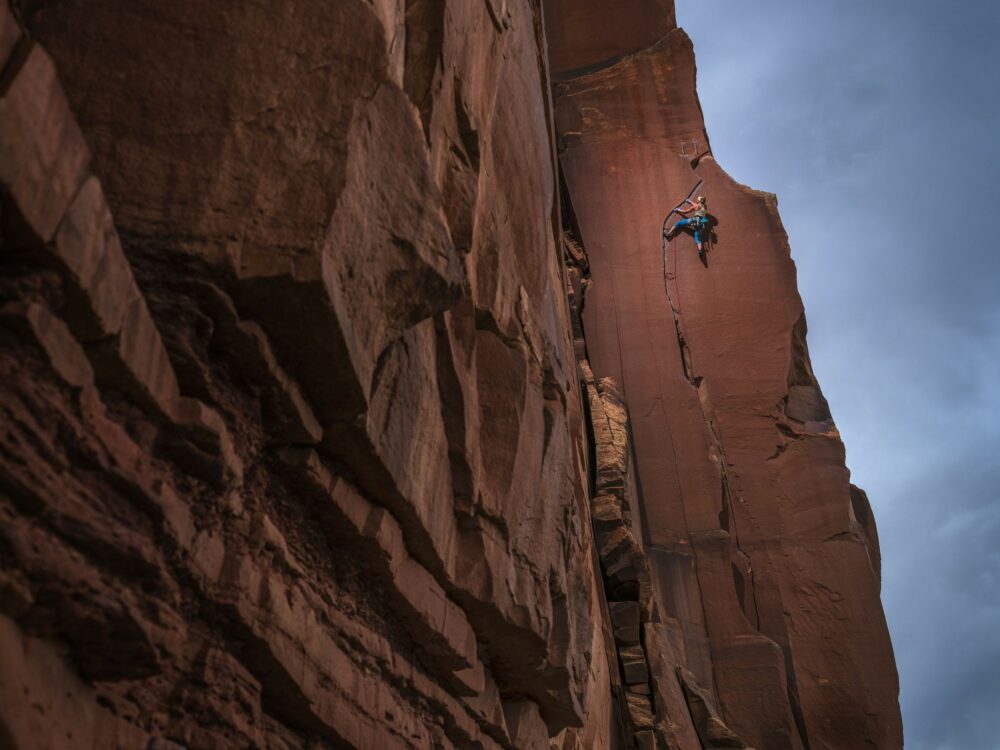
Climber: Savannah Cummins
f/4 at 1/2,500s, ISO 200, GFX 100 + ELB 1200 + HS head at full power + High Performance Reflector.
Head to Indian Creek.
I decided to head to Indian Creek, Utah, which is one of my favorite climbing areas. Indian Creek is home to a very specific type of traditional climbing on splitter cracks that are typically the same width for the entire climb.
Capturing rock climbing is physically intense.
Capturing the sport of rock climbing is physically intense. It involves carrying huge backpacks loaded with climbing gear, ropes, food and water as well as camera gear up to the base of the cliff. These packs can weigh up to 34 kg (75 pounds) and that is without lighting gear. Add in lighting gear and the packs start to get really heavy.
For this shoot, Ted my assistant/climber was there not only to help carry some of the gear to the base of the cliff but to also be up on the wall holding my ELB 1200 pack and an HS flash head.
Ted could just about climb anything I pointed at, which was critical, because we typically placed him on an adjacent route across from or next to the one that our climber model Savannah, climbed. For this assignment, having the right crew had a huge impact on the quality of the final images.
“The Elinchrom High-Performance reflector was key to boosting the light.”
One of the best images we produced was captured on the very first shoot day (shown above).
We had Ted our assistant posted up on a route across from and above “Go Sparky Go”. Ted, and the flash, were approximately 12 meters (40-feet) from the climber. The Elinchrom High-Performance reflector was key to boosting the light so it could reach her.
With a little experimentation, we were able to dial in the lighting and then waited for the route to be shaded. I underexposed the background by about two-thirds of a stop to create the dark, ominous clouds.
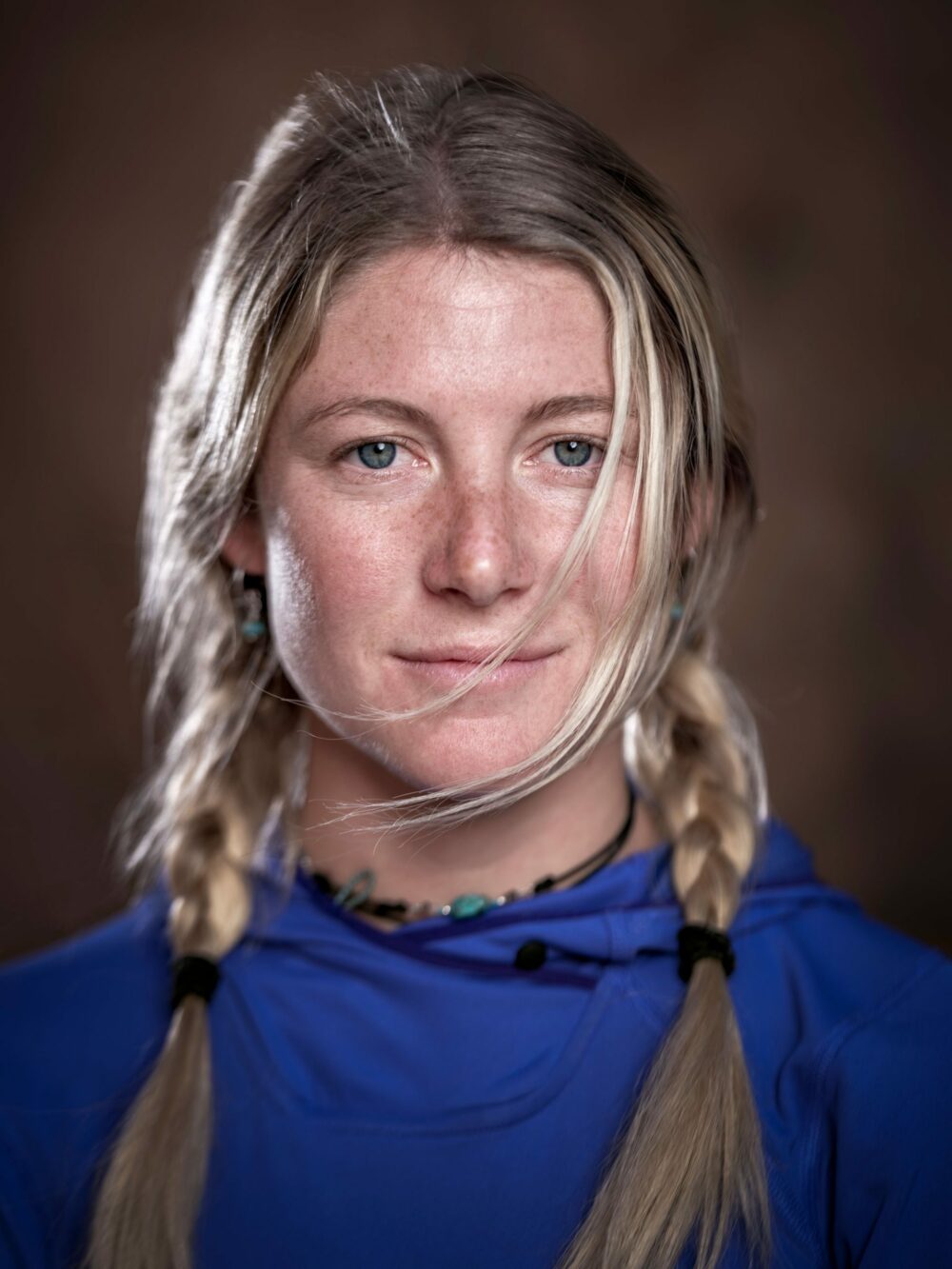
f/2.8 at 1/1,600s, ISO 200, GFX 100, ELB 500 TTL + Rotalux Deep Octa (100cm)
The key factor
When using flash to light up climbers on a rock face, having a unit with a lot of power is the key factor. As is the Hi-Sync (HS) flash technology, which allows me to overpower the sun from up to 18 m (60-feet) away. § For all of the actions shots, I used the ELB 1200 with the HS flash heads to light up the athletes.
We also shot a variety of portraits as well and for those images I used the ELB 500 TTL because it too can sync at all shutter speeds with the GFX 100 and also because it is so easy to use.
Get into position.
With climbing photography, it takes a lot of time to get into position. When artificial lighting is introduced, it takes even more time to get the light in position and then line up the shot.
Once Ted was in position, we sorted out the lighting. With some experimentation we figured out that if Ted bounced the light off the wall behind the climber, the light quality dramatically improved.
Create something new and different.
The intent here with using artificial lighting was to create something new and different. Not many photographers have used artificial lighting in Indian Creek. The amount of work involved is kind of ridiculous. § But on each of these climbs (and others) we ended up creating images that are completely new and different than what has been created in the past.
The hope is that we have created something stunning and aesthetic as well.
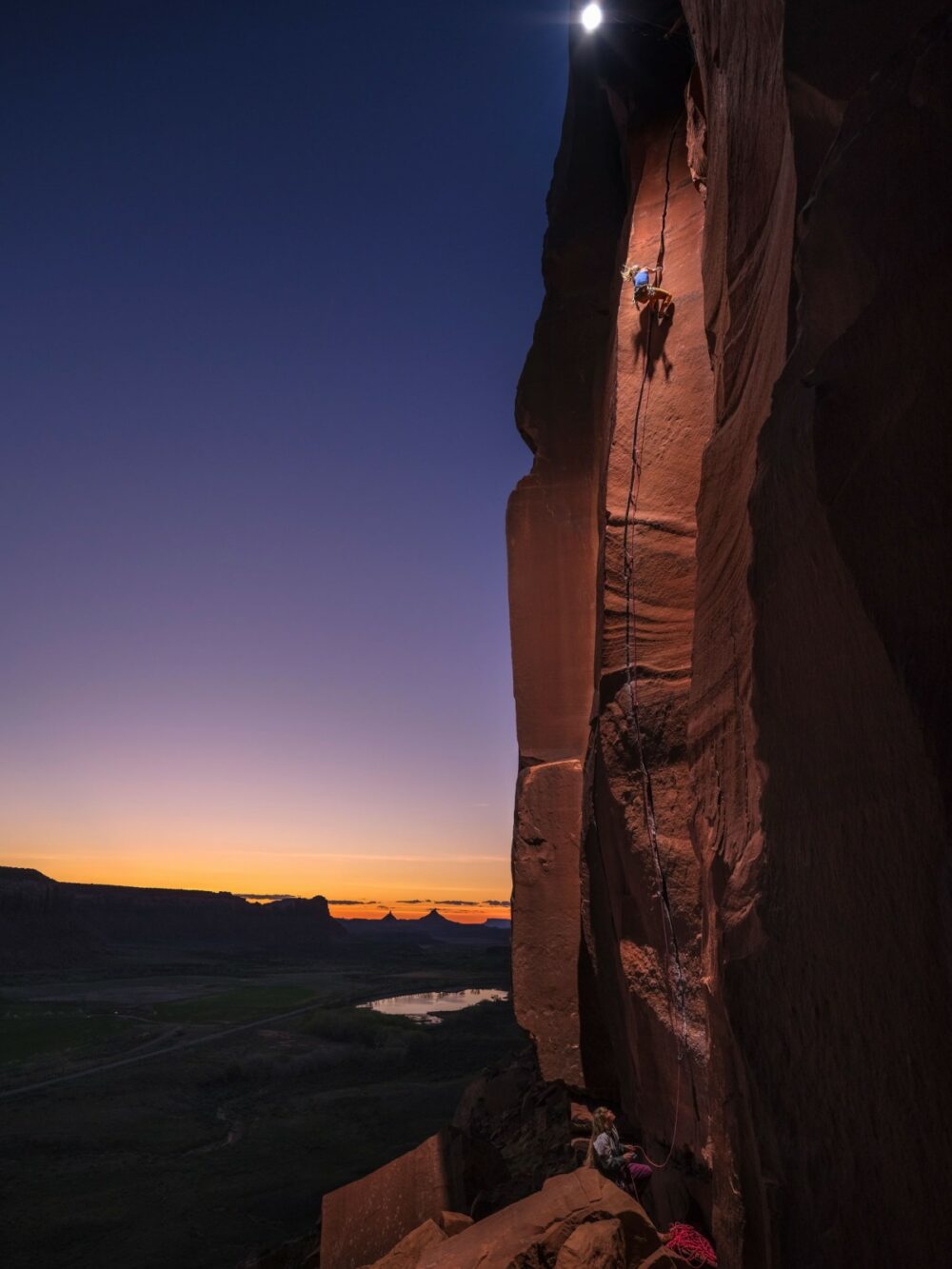
Climbers
Savannah Cummins
Angela Van Wiemeersch
Photographer
Michael Clark
Assistant and climber
Ted Hesser
Photo © Michael Clark | Athlete: Savannah Cummins | FUJIFILM GFX 100 Digital Camera with FUJINON GF32-64mmF4 R LM WR and using ELB 500 TTL and ELB 1200 HS lighting equipment provided by Elinchrom | Michael Clark is a compensated professional photographer. FUJIFILM, FUJINON, and BUILD YOUR LEGACY are trademarks of FUJIFILM North America Corporation and is affiliates. All rights reserved.
